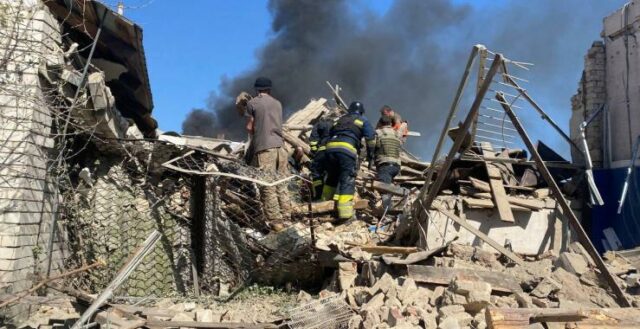Escalating Tensions in the Kharkiv Region: A Closer Look
The Kharkiv region in northeastern Ukraine has become a focal point of intense military activity, as Russian forces ramp up their offensive from neighboring Belgorod. This unfolding conflict is not merely a headline; it deeply impacts the lives of countless individuals. Let’s unpack what’s happening on the ground and explore the broader significance of these events.
Recent Developments: Airstrikes and Clashes
In the quaint village of Liptsy, residents have experienced the horrors of warfare firsthand, with two airstrikes shaking their community in recent days. The reports coming from the General Staff illustrate a grim picture. Troops have staged attacks in the Vovchansk area, where Ukrainian defenders displayed remarkable resilience by successfully repelling one of the assaults. Unfortunately, the second confrontation remains ongoing and continues to escalate.
This mirrors a troubling trend seen across the region. Clashes along the Kupiansk front near Berestove are further evidence of sustained hostilities. It’s a reminder of the challenges that locals face daily—many of whom are simply trying to go about their lives amidst the chaos.
Impact on Civilians: A Difficult Reality
The situation in Vovchansk exemplifies the precariousness of daily life. As local news sources like KHARKIV Today report, attacks persist, but Russian forces seem to be struggling to achieve their objectives, leading to significant casualties among their ranks. Analyses suggest that recent clashes have resulted in approximately 180 Russian soldiers being injured or killed. These numbers are not just statistics; they represent real people who are caught in the whirlwind of conflict.
Consider the perspective of families in the area. Imagine waking up to the sound of artillery, uncertain if your loved ones will return home safely. The human cost of this conflict is staggering and resonates deeply with those who live under such conditions.
The Broader Implications: Fighting for Control
This escalating conflict illustrates a broader struggle for territorial control. Ukrainian forces are steadfast in their defense against ongoing Russian offensives, which only deepens the region’s instability. Recent studies indicate that regions experiencing prolonged conflict see increased displacement among civilians, and this could further exacerbate the humanitarian crisis.
The implications extend beyond military gains; they impact infrastructure, healthcare, and the emotional well-being of residents. According to the United Nations, conflicts like this lead to increased rates of anxiety and PTSD among affected populations, underscoring the urgent need for support and intervention.
Conclusion: The Path Forward
As we witness this ongoing conflict in Kharkiv, it’s essential to remember the human stories behind the headlines. While military strategies play a pivotal role in the unfolding situation, the real victims are the civilians caught in the crossfire. Understanding their plight is crucial as we navigate this complex landscape.
As events continue to develop, the focus should remain not only on strategic military outcomes but also on fostering regional stability and providing humanitarian aid to those in dire need. The community’s resilience in the face of adversity reminds us that hope persists, even in the darkest times.





